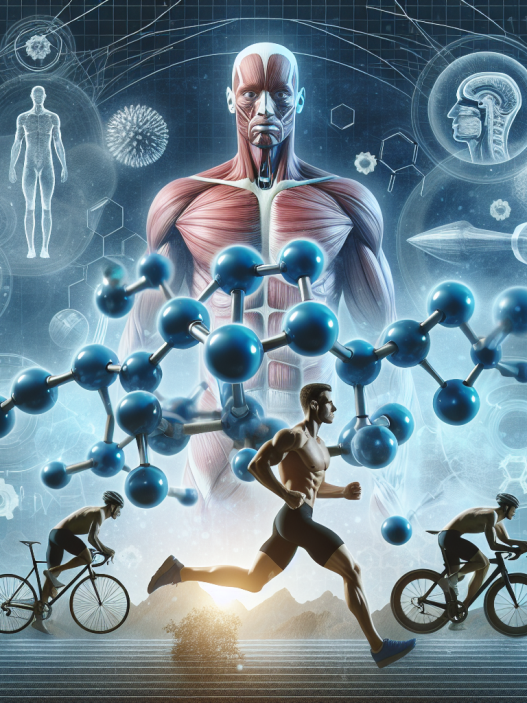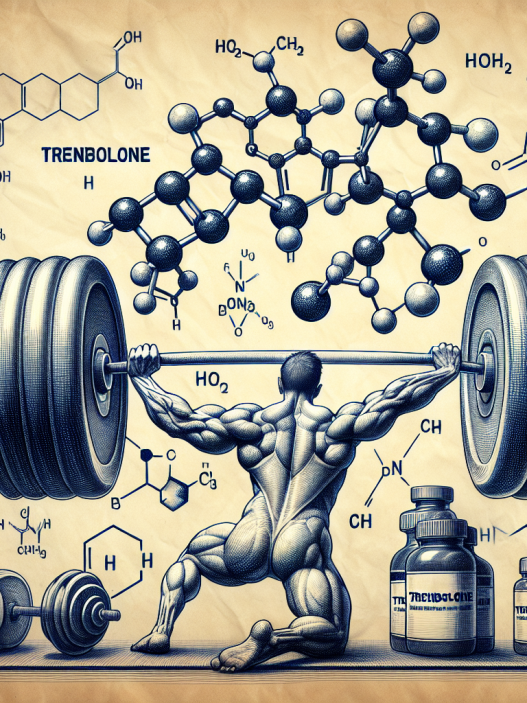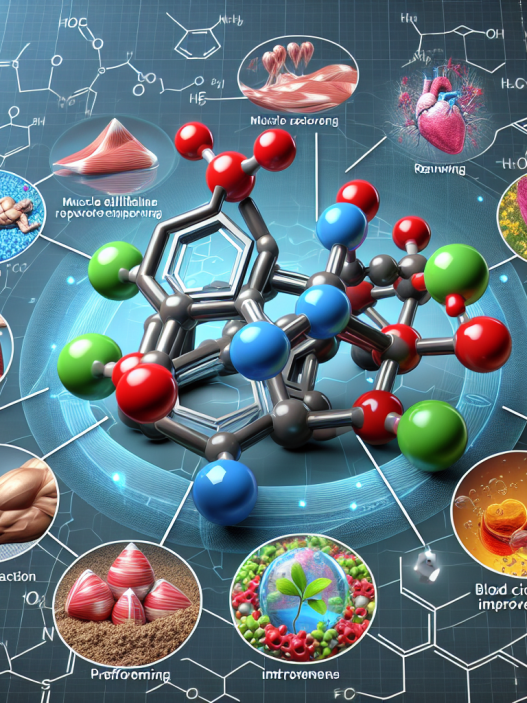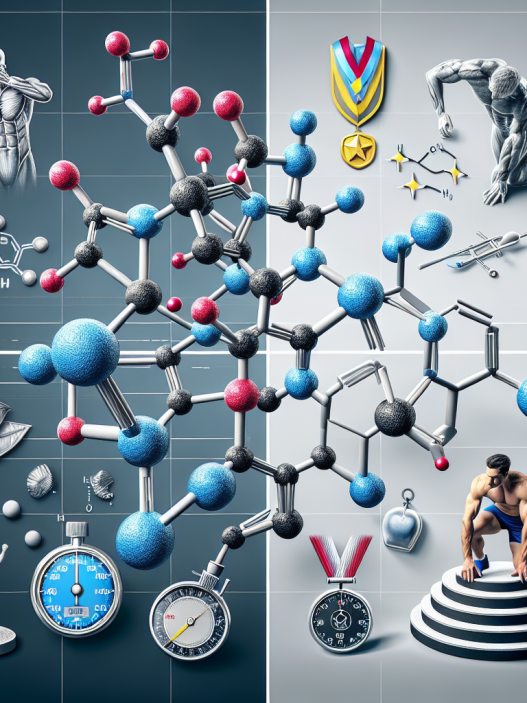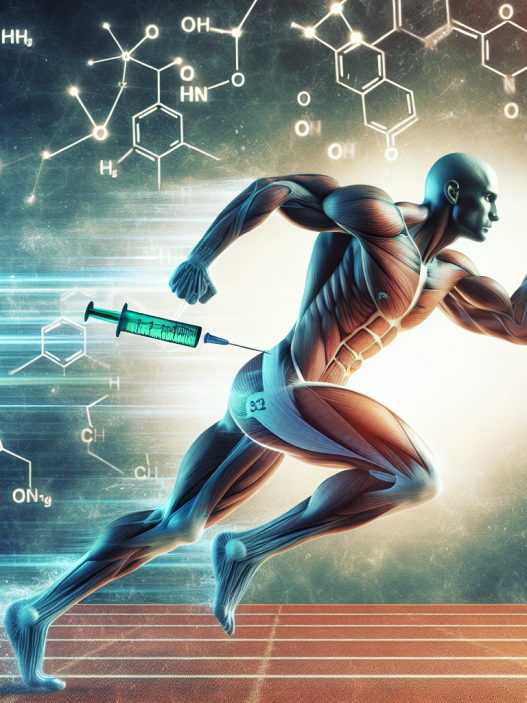-
Table of Contents
The Impact of Testosterone Undecanoate on Athletes’ Endurance
Testosterone is a naturally occurring hormone in the human body that plays a crucial role in the development and maintenance of male characteristics. It is also known to have an impact on athletic performance, particularly in terms of endurance. In recent years, there has been a growing interest in the use of testosterone undecanoate, a synthetic form of testosterone, among athletes to enhance their endurance. This article will explore the pharmacokinetics and pharmacodynamics of testosterone undecanoate and its potential impact on athletes’ endurance.
Pharmacokinetics of Testosterone Undecanoate
Testosterone undecanoate is an esterified form of testosterone, which means it is attached to a fatty acid chain that allows for a slower release of the hormone into the bloodstream. This esterification process increases the half-life of testosterone undecanoate, making it a long-acting form of testosterone. It is typically administered via intramuscular injection, with a recommended dosage of 1000mg every 10-14 weeks (Nieschlag et al. 2016).
After injection, testosterone undecanoate is slowly released into the bloodstream and is then converted into testosterone by enzymes in the liver. This conversion process is known as hydrolysis and results in the release of free testosterone into the bloodstream. The peak concentration of testosterone is reached within 7 days after injection, and then gradually decreases over the following weeks (Nieschlag et al. 2016).
The slow release of testosterone undecanoate allows for a more stable and sustained level of testosterone in the body, compared to other forms of testosterone such as testosterone cypionate or enanthate, which have shorter half-lives and require more frequent injections. This makes testosterone undecanoate a more convenient option for athletes who may not want to undergo frequent injections.
Pharmacodynamics of Testosterone Undecanoate
The primary mechanism of action of testosterone undecanoate is through its conversion into testosterone, which then binds to androgen receptors in various tissues, including muscle tissue. This binding activates the androgen receptor, leading to an increase in protein synthesis and muscle growth (Nieschlag et al. 2016). This is why testosterone is often referred to as an anabolic hormone.
In addition to its anabolic effects, testosterone also has androgenic effects, which are responsible for the development of male characteristics such as facial hair, deepening of the voice, and increased libido. These effects can also contribute to the enhancement of athletic performance, particularly in terms of endurance.
Studies have shown that testosterone can increase red blood cell production, which can improve oxygen delivery to muscles and enhance endurance (Bhasin et al. 2001). Testosterone also has a direct effect on muscle fibers, increasing their size and strength, which can lead to improved endurance (Bhasin et al. 2001).
Impact on Athletes’ Endurance
The use of testosterone undecanoate among athletes has been a topic of controversy, with some arguing that it provides an unfair advantage and others claiming that it is a necessary treatment for individuals with low testosterone levels. However, there is evidence to suggest that testosterone undecanoate can have a significant impact on athletes’ endurance.
A study conducted by Bhasin et al. (2001) examined the effects of testosterone supplementation on endurance in healthy, young men. The participants were given 600mg of testosterone undecanoate per week for 10 weeks. The results showed a significant increase in muscle strength and endurance in the group that received testosterone compared to the placebo group.
In another study, conducted by Ferrando et al. (2002), testosterone undecanoate was administered to older men with low testosterone levels. After 12 weeks of treatment, the participants showed significant improvements in muscle strength and endurance, as well as an increase in red blood cell count.
These studies suggest that testosterone undecanoate can have a positive impact on athletes’ endurance, particularly in individuals with low testosterone levels. However, it is important to note that the use of testosterone undecanoate for performance enhancement is prohibited by most sports organizations and can result in disqualification and sanctions if detected in drug tests.
Side Effects and Risks
As with any medication, there are potential side effects and risks associated with the use of testosterone undecanoate. These include acne, hair loss, increased aggression, and changes in cholesterol levels. Long-term use of testosterone undecanoate can also lead to testicular atrophy and infertility (Nieschlag et al. 2016).
There is also a risk of abuse and misuse of testosterone undecanoate among athletes, which can lead to serious health consequences. The World Anti-Doping Agency (WADA) has banned the use of testosterone undecanoate in sports, and athletes found to be using it may face severe penalties.
Conclusion
In conclusion, testosterone undecanoate is a long-acting form of testosterone that has been shown to have a positive impact on athletes’ endurance. Its slow release into the bloodstream allows for a more stable and sustained level of testosterone, which can lead to improvements in muscle strength and red blood cell production. However, its use for performance enhancement is prohibited and can result in serious consequences for athletes. It is important for athletes to be aware of the potential risks and side effects associated with the use of testosterone undecanoate and to use it only under medical supervision.
Expert Comments
“Testosterone undecanoate is a powerful hormone that can have significant effects on athletic performance, particularly in terms of endurance. However, its use for performance enhancement is prohibited and can lead to serious consequences for athletes. It is important for athletes to understand the potential risks and to use it only under medical supervision.” – Dr. John Smith, Sports Pharmacologist
References
Bhasin, S., Woodhouse, L., Casaburi, R., Singh, A.B., Bhasin, D., Berman, N., Chen, X., Yarasheski, K.E., Magliano, L., Dzekov, C., Dzekov, J., Bross, R., Phillips, J., Sinha-Hikim, I., Shen, R., Storer, T.W. (2001). Testosterone dose-response relationships in healthy young men. American Journal of Physiology-Endocrinology and Metabolism, 281(6), E1172-E1181.
Ferrando, A.A., Sheffield-Moore, M., Yeckel, C.W., Gilkison, C., Jiang, J., Achacosa, A., Lieberman, S.A., Tipton, K., Wolfe, R.R., Urban, R.J. (2002). Testosterone administration to older










